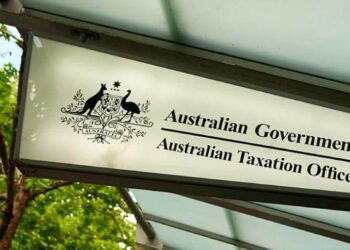Under the government’s recently legislated JobKeeper scheme, eligible businesses will receive $1,500 per fortnight for each eligible employee, which will currently go for six months from the fortnight starting on 30 March 2020 to the fortnight ending on 27 September 2020.
To be eligible, businesses must have suffered a recent decline in turnover as a result of the COVID-19 outbreak.
Businesses will fulfil the relevant decline in turnover criteria if the business:
- Is an ACNC-registered charity (but not a university or school) and its turnover decreases by 15 per cent compared to the same month or quarter in 2019.
- Has a projected turnover likely to be more than $1 billion or had an aggregated turnover in the 2019 income year of more than $1 billion and its turnover decreases by 50 per cent compared to the same month or quarter in 2019.
- Is not one of the above entities and its turnover decreases by 30 per cent compared to the same month or quarter in 2019.
Correctly calculating decline in turnover ‘crucial’
But according to CGW Lawyers special counsel Sarah Lancaster, the situation “could get ugly” for businesses that underestimate their decline in business turnover.
For example, she said a business can reasonably assess its projected turnover for April 2020 as $100,000 when in April 2019 it was $150,000, meaning its decline in turnover is around 33 per cent and the business meets the decline in turnover condition at the test time.
However, the business’s actual turnover for April 2020 could turn out to be $120,000, meaning its decline in turnover was actually 20 per cent.
Ms Lancaster said the risk is that the ATO will later audit the business and deny it was eligible, in which case, the business will have to pay back the JobKeeper payments and interest, even though the payments have been paid to employees.
“The Treasury has provided some commentary in its fact sheet for employers that ‘there will be some tolerance where employers, in good faith, estimate a 30 per cent or more or 50 per cent or more fall in turnover but actually experience a slightly smaller fall’,” Ms Lancaster said.
“However, we don’t know what amounts to ‘a slightly smaller fall’ — is a 25 per cent fall in turnover ‘slightly smaller’ than 30 per cent? The difficulty for businesses is that projecting their turnover in these times is not going to be easy.
“It is crucial for businesses to keep evidence about how they have calculated their projected turnover.”
Ms Lancaster said a business will not be entitled to the JobKeeper payment if it does not comply with the record-keeping requirements, which generally require the business to keep records to substantiate the information it provides to the Commissioner of Taxation.
“Under the legislation, the commissioner has the power to issue a written determination, by legislative instrument, that specifies the types of records and how those records should be kept, in order for an entity to satisfy the record-keeping requirements,” she said.
“No determination has been made as yet, but we expect this will be issued in the coming weeks.”



Whatever you do, document it and get approval from the clients if you are acting on their behalf. Logically the ATO should determine eligibility based on the changes from either March or April 2020 compared to March or April 2019. Readings indicate “any” comparable period. But the objective is the Pandemic’s impact on turnover so comparing any other time series isn’t relevant. Just the same as using March 2020 for Cash Boost is UNFAIR. Some businesses were already impacted and had shed jobs/reduced hours. Their boost is potentially lower. The ATO should have used the first quarter 2020 for both types of entities!
What about where March 2019 on an Accruals basis of a Sole Trader not registered for GST does not qualify because the GST Turnover has only fallen by 12% compared to March 2020 but on a cash basis falls by 33%?
I’d like to know how the turnover reduction can be substantiated when a service entity is used to pay employees, but the downturn impacted the trading entity paying the service entity.
Definition of GST turnover is supplies made meaning accrual basis in my opinion, however would be great t o get some clarification here as there is a heap of commentary about GST turnover is as reported in BAS’s but that’s not accurate when you look into the definition of GST turnover. Cash v accrual is just the way you report your GST turnover not the definition itself.
Typical of the Federal Govt in that they make big brave statements but the reality is full of detail and pitfalls
Why make it so difficult? Almost like it is fodder for bureaucrats.
What is so difficult? Can you come up with a better scheme?
As soon as there is a value or amount that is a qualifier then of course there will be cases close to the edges that require a degree of caution. Doesn’t make the whole scheme flawed.
No clarity on whether turnover should be measured on a cash basis or accrual basis either?
You can use either so long as the comparisons are consistent.